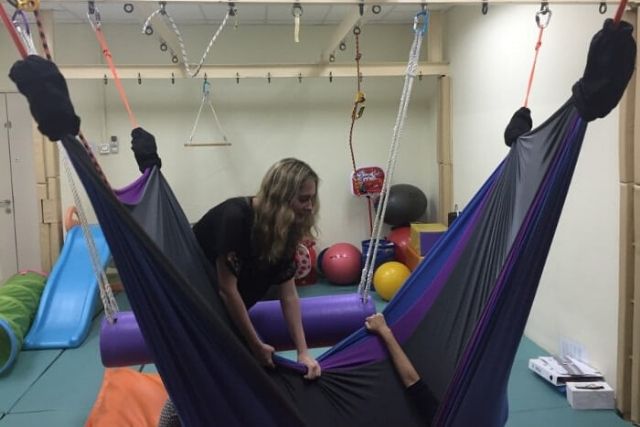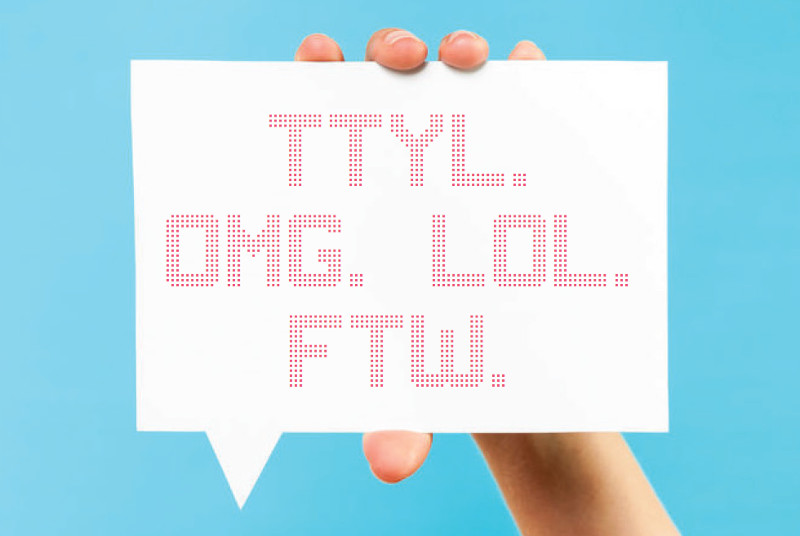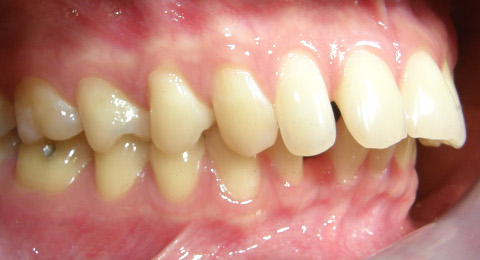No two children are alike. For this reason, they all learn to talk according to their own timeline. Your child may not use the same vocabulary as his or her friends of the same age. Every child has their own experiences with language, learning and other skills.

Pronunciation is considered to be the most common type of speech problem that parents notice in their children1. Difficulties with language and speech can affect how your child expresses their thoughts, which can lead to other issues like low self-esteem and teasing.
While most youngsters speak clearly by age 6, children who continue to mispronounce words after this age may need speech therapy2.
It can be a tricky task to figure out why your child has trouble pronouncing certain sounds. Pronunciation problems can also be challenging to correct. A novel therapy that can help children to pronounce sounds properly has emerged recently.
This is where ultrasound speech therapy comes into the picture.
Ultrasound Speech Therapy
In 2017, a research team developed a technique that allows people to visualise the movements and shape of their tongues in real-time. With ultrasound, you can look at the way your tongue moves while you are talking3, 4.
The movements are captured with an ultrasound probe that is placed under your jaw. You will be able to see your tongue as well as your palate.
Many speech therapists use the traditional process-oriented approach, where they listen to how a child pronounces sounds. Based on the findings, recommendations for improvement are provided.
They normally use diagrams and instructions to explain the correct positioning of the tongue. While diagrams can be useful, ultrasound can make it much easier for a young child to follow the instructions5.
How Can Ultrasound Technology Help?
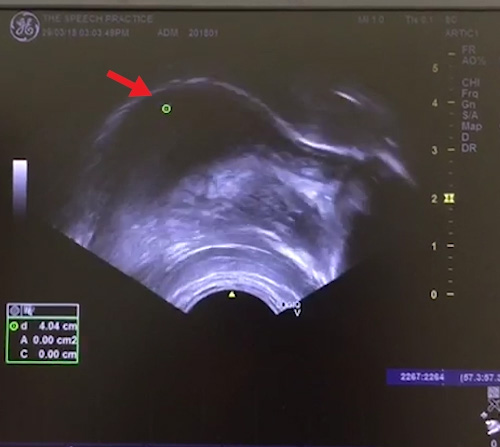 Ultrasound image for ‘k’ sound. Image credit: The Speech Practice
Ultrasound image for ‘k’ sound. Image credit: The Speech Practice
Many young children have trouble pronouncing certain words or sounds correctly. It can be hard for them to form the right sounds with their lips and tongues.
Moreover, a child might find it difficult to follow the advice of a speech therapist when they can’t see what the therapist is doing. Ultrasound technology provides an approach where visual feedback provides the most important cues.
The ultrasound technique makes it easier to understand how sounds need to be pronounced. This makes it a great alternative for teaching children the correct pronunciation of specific sounds. It also enables the speech therapist to see what they are working with.
As your child watches the screen, the speech therapist will explain what is happening with the speech organs. This creates an opportunity for the therapist to help your child recognise what they are not doing right.
The aim of this technology is to make the child aware of the way their tongue looks and feels in relation to other structures in the mouth when they pronounce sounds correctly.
Your child will have the opportunity to compare the pictures of normal speech signals with the pictures showing the incorrect ways of pronouncing a sound. This way, they will have better control over the movements of their tongue.
Ultrasound is a new tool that can boost your youngster’s attitude about speech difficulties. They will also be motivated to achieve success with this fun new approach. Children enjoy ultrasound speech therapy because, for many of them, it feels like they are playing a type of video game.
Before we can mention specific examples of how ultrasound therapy can help your child to pronounce difficult sounds, we first need to look at how these sounds are created.
How are Sounds Produced?

For a sound to be produced, the air has to flow from our lungs through our vocal tracts. This includes the vocal cords, the nose and the mouth.
Each sound is formed in a special way. The vocal cords need to vibrate to form certain sounds while other sounds can only be formed when air flows through the nose. However, the mouth plays the largest role in creating sounds.
Children often have difficulty pronouncing specific consonants, such as K, G, S and R.
All of the consonants are made by stopping the flow of air almost completely. When this happens, the air is forced through a tiny opening to make a loud and turbulent sound. The different types of consonants are created by blocking the airflow in different ways.
We need to use our tongues, lips, mouths and throats to block the air that comes from the lungs.6
Ultrasound for K and G Sounds
The “k” and “g” sounds are velar sounds that are created when the airflow is stopped by bringing the back of your tongue into contact with the soft palate at the back of your mouth.
The air is fully blocked and then an explosive sound is heard after a sudden release. Your lips need to be gently held apart while saying these sounds.
Ultrasound technology can help your child to pronounce these two consonants correctly as they will be able to see how these sounds are created deep within the mouth. Normally, this area is not visually accessible.
Ultrasound for the S Sound
The “s” sound is a fricative sound which means that it is created when the tongue tip is raised slightly. The creation of this sound relies on a constant flow of air through the mouth. It should have a slight “hissing” quality to it.
Lateral lisps are hard to visualise from the outside. With a lateralised “s”, the tongue blade is flattened, with air escaping over both sides of the tongue. Ultrasound therapy can help children who have trouble pronouncing an “s” see what is happening inside their mouths.
Ultrasound For Resistant R Sound
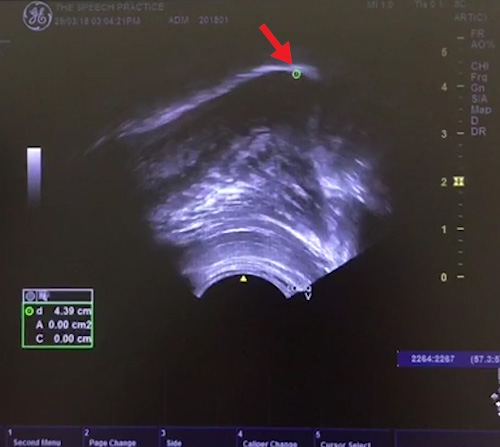 Image credit: The Speech Practice
Image credit: The Speech Practice
The “r” sound is quite challenging to teach and it is certainly the trickiest one to correct. The lips, tongue and the back of the throat all work together to form an “r” sound. These structures need to close up slightly to make sure the sound coming from the vocal cords sounds just right.
The visual feedback that’s provided by ultrasound technology can make it much easier for your child to improve the positioning of their tongue and other speech organs while pronouncing the “r” sound.
A Fun and Effective New Technology
With ultrasound technology, your child will be able to discover the correct ways to use all of their speech organs. Ultrasound in speech therapy has numerous advantages and this “game changer” can be extremely effective for teaching kids the correct pronunciation of certain sounds!
This article is contributed by Dr Lisa Lim Su Li, Speech Language Pathologist at The Speech Practice. Her professional experience over 10 years includes work in acute and rehabilitation hospitals and special schools, both in Australia and Singapore.
References
1 Azmat, Rabia & Khan, Muhammad & Manzoor, Tariq & Ibrahim, Muhammad & Tahira, Sadia & Pervaiz, Safa. (2014). Prevalence of articulation disorder in school going children between ages of 8 to 12 years. International Journal of Rehabilitation Sciences. 3. 32-36.
2 The Communication Trust. (2015). The ages and stages of children’s communication development from 5 to 11 years. Universally Speaking.
3 Fabre, D., Hueber, T., Girin, L., Alameda-Pineda, X., & Badin, P. (2017). Automatic animation of an articulatory tongue model from ultrasound images of the vocal tract. Speech Communication, 93, 63-75.
4 Preston, J. L., Byun, T. M., Boyce, S. E., Hamilton, S., Tiede, M., Phillips, E., … & Whalen, D. H. (2017). Ultrasound images of the tongue: A tutorial for assessment and remediation of speech sound errors. JoVE (Journal of Visualized Experiments), (119), e55123.
5 VICSI, K., KOVÁCS-VASS, E. M. Ő. K. E., & BARCZIKAY, P. (1994). A speech improvement technique based on visual feedback. Acta Linguistica Hungarica, 42(1/2), 93-101.
6 Delahunty, G. P., & Garvey, J. J. (2010). The English language: From sound to sense. WAC Clearinghouse.
* * * * *
Like what you see here? Get parenting tips and stories straight to your inbox! Join our mailing list here.
Want to be heard 👂 and seen 👀 by over 100,000 parents in Singapore? We can help! Leave your contact here and we’ll be in touch.










































